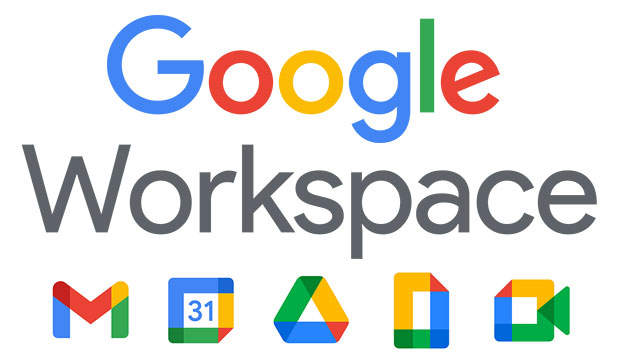Your Quick Guide to Attack Surface Management
Cybercriminals are constantly finding new and creative ways to steal credit card info, passwords, and other sensitive data that they can exploit.
Even large companies such as Facebook, Yahoo, Alibaba, and yes, even Google, have fallen victim to cyberattacks.
One of the best strategies you can employ to bolster your online cybersecurity is Attack Surface Management (ASM).
To better understand attack surface management, know what an attack surface is first and the type of cyber threats your attack surface is vulnerable to.
In this guide, we cover several tips on implementing an effective attack surface management system for your business.
What is an attack surface?
An attack surface is the number of all possible points or attack vectors that unauthorized users can use to access a system and extract data or disrupt the system in some way.
In layman’s terms, it is the entire area of an organization or system that is susceptible to hacking.
Think of an attack surface as a room with numerous windows serving as potential entry points for intruders.
Constantly monitoring windows for intruders is essentially similar to monitoring an attack surface.
Some of the ways a hacker can access your system and expose it to a cyberattack include:
-
Malware attack
Malicious software or malware is computer code designed to disrupt, disable, or take control of your system.
It comes in many forms, usually hidden in another file or disguised as a harmless app. It can compromise confidential data and prevent your system from working correctly.
Malware works by taking advantage of technical flaws or vulnerabilities in your hardware, Operating System (OS), and software.
-
Phishing attack
Phishing happens when cyber criminals send fraudulent emails or text messages claiming to be from reputable companies to fool you into revealing personal information.
This tactic is often used to steal your user data, login credentials, credit card numbers, passwords, and more.
-
Man-in-the-middle (MITM) attack
A man-in-the-middle attack occurs when a perpetrator positions himself in the middle of a conversation between you and an application.
This cyberattack lets hackers steal your personal information by leading you to think that a normal information exchange is taking place.
You can minimize the risk of a MITM attack by ensuring the Wi-Fi networks you connect to are secure.
-
Password attack
A password attack is one of the most common forms of corporate and personal data breach. It refers to any method used to maliciously authenticate into your password-protected accounts.
You can drastically minimize the chances of falling victim to a password attack by using unique, alphanumeric passwords.
Other basic cybersecurity practices you can follow include installing a firewall and antivirus software.
Also, implementing honeypots, which are basically virtual traps to lure attackers, and simply avoiding opening and responding to emails from unknown senders can go a long way in protecting you from potential cyber-attacks.
What is attack surface management (ASM)?
ASM refers to the continuous discovery, inventory, classification, prioritization, and security monitoring of external digital assets that contain, transmit, or process sensitive data.
Any weaknesses in your attack surface management can be exploited by hackers and can result in your company’s confidential information, including client details, being stolen, leaked, or wiped out.
Many large companies are now prioritizing attack surface management systems as a countermeasure to the increasing number of cyberattacks.
Cyberattacks that shaped the development of ASM
Below are a few of the cyberattacks that have affected major companies and corporations and have since helped shape the development of ASM:
-
Operation Aurora (2010)
Operation Aurora was a series of cyberattacks that targeted U.S. private sector companies. The attack started in mid-2009 and continued through December 2009.
Dozens of organizations, such as Adobe Systems, Akamai Technologies, Juniper Networks, and Rackspace were targeted by the attack.
-
Epsilon Email Breach (2011)
One of the largest data breaches in history happened in April 2011.
Epsilon—then the world’s largest permission-based email marketing company—suffered a major breach that led to the stolen names and addresses of 60 million users.
Companies and Epsilon’s clients, such as BestBuy, Walgreens, JPMorgan, CitiGroup, Capital One and others were also affected.
-
DDoS attack on Dyn (2016)
The attack on Dyn is a series of distributed denial-of-service (DDoS) attacks that occurred in 2016.
The incident caused major internet platforms and services to be unavailable to a large number of users in North America and Europe.
Tips to create an effective attack surface management system
Your company could be vulnerable to cyberattacks without you even knowing.
Leverage vulnerability scanning and penetration testing by using a reliable breach and attack simulation platform to strengthen your cybersecurity.
Attack Surface Management services can perform these tasks for you, find and address potential weaknesses in your system, and protect you from future cyberattacks.
Maintaining a complete inventory of your company’s Internet-facing assets can also give you a deeper understanding of your attack surface.
By following the tips below, you’ll be well on your way to creating an effective attack surface management system for your business:
- Get a complete inventory of the internet-facing assets connected to the company infrastructure.
- Find subdomains and other connected assets easily with discovery tools.
- A complete inventory lets you leverage technology fingerprinting to understand the risks and values of these assets. This allows you to get a clear picture of what an asset does.
- Track your attack surface as it evolves and set up regular monitoring for assets.
Should you implement and practice attack surface management?
Hackers continue to exploit weaknesses in your systems, networks, and infrastructure to breach your data and steal digital information and assets.
Attack surface management can fortify your cyber defenses by helping you mitigate risks and prevent potential cyberattacks.
Invest in attack surface management to establish client confidentiality and complete data security for your internet-facing assets.













